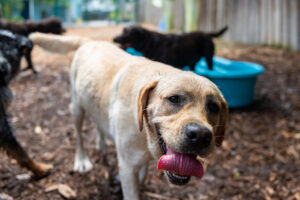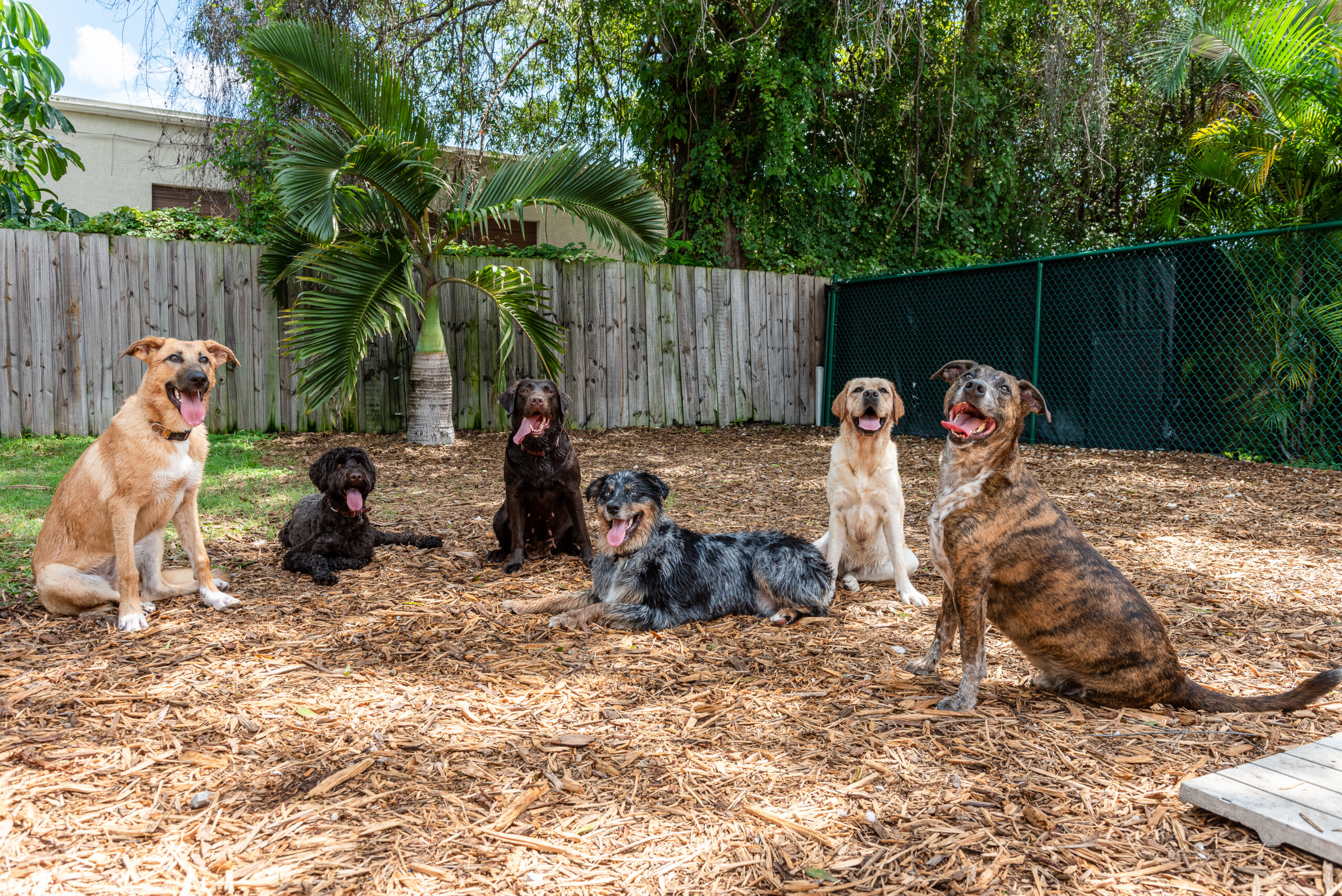
Why do we teach Basic Obedience?
The purpose of teaching basic obedience to your dog is to establish lines of communication. By creating this exchange, you can tell your dog the behaviors you want them to continue or the actions you want to replace (with the new skill set of the taught obedience.)
Obedience is more about the dog following human leadership than the dog performing a bunch of tricks. We establish the best lines of communication by instilling a work ethic into your dog rather than relying on “trick and treat” training. Using rewards when teaching new behaviors or intermittently “paying” your dog for a job well done is very different than bribing them!
Dogs are purpose-driven, and we should use that innate factor when creating a foundation of reliable basic obedience. This approach makes the healthiest relationship between a dog and a handler. We also teach obedience training to dogs for the overall safety and well-being of your pet. Bringing your dog to a vet, downtown, in parks, and even around your neighborhood introduces many training scenarios. Having confidence and predicting how your dog will respond in these scenarios keeps them safe. The more you practice obedience, the more your dog understands their job.
Knowing what motivates your dog will help you to connect with them during the teaching phases. Do not expect a dog to perform continually without any rewards when teaching, but be careful that the reward should not be the only reason they respond to the training. A balanced training approach creates a solid base for loyal obedience. As the dog matures, consequences are part of learning. You do your dog an injustice by not teaching them what a correction is. Same with tiny humans. At some point, a child needs to learn; it is dangerous to run across a street without looking. It is your job also to show your dog what a correction is. If failing to do so, a loose dog on the road could get corrected by a car. I would rather correct my dog for not coming through obedience (in a controlled setting) than a vehicle hitting them as their correction.
What happens if you don’t teach Basic Obedience to your dog?
A dog learns from the interactions it has within its environment. Some breeds tend to be strong-willed dogs that genetically will take over leadership in their household if the owner doesn’t fill this role. A dog demonstrates this unhealthy relationship by pulling on the leash, lunging, mouthing, barking, and in extreme cases guarding food/space/even the owner. A dog that resource guards its owner is deeming them as their property, and this is very concerning.
Without training in obedience, dogs can revert to what they know instinctively relative to their breed. Examples of this could be digging, jumping, play barking, bolting through doors to be first, chewing, mouthing, demanding attention, or stealing objects around the house. Depending on the breed, the family can sometimes “figure it out” once the dog finally matures and if the dog overall has good manners.
Our Labrador Retriever, Rubi, was almost 2 when we got her. She never had any obedience training, and she was what the core of a Lab would be. She was curious, had a natural retrieve drive, and LOVED the water. She had accidents inside, would constantly have things in her mouth, and would dig relentlessly around any water source outdoors. If we continued to let her be herself, she wasn’t necessarily bad. She was just an untrained Lab! That might have worked if we lived in the country, but practically she needed to learn her jobs around our life.
Training never changes the spirit or demeanor of the dog. Training should add to the dog they already are. Dogs thrive when they have straightforward rules/boundaries, a job, and healthy outlets (based on the individual dog.) Waiting with an aggressive or pushy dog only makes the dog’s respect harder to earn with the owner.
What is Basic Obedience?
Basic obedience is commands used to give our dog a job. In our Full-Service Training at The Doghouse, the foundation of dog commands and our definition of them are:
Sit– The dog’s rear end must contact the floor and not hover in the sit position.
Down– In this exercise, the dog’s elbows need to make contact with the floor.
Heel– In this exercise, the dog is positioned on the left side. Your dog’s shoulder should line up with your knee. The leash should always be loose, and the dog should follow the handler at all times. Think of a giant follow-the-leader game.
Stay-In this exercise, you can leave the dog either in a sit position or a down position. The dog must hold that position until you come back to the dog and release the dog out of it. *You must never release the dog from the stay position if you are away from the dog. I don’t want the dog to confuse stay and come. Stay and Come are complete opposite exercises. Walk back to the spot you assigned the sit or down and give the release word “OK” to allow them to break the position.
Come– In this exercise, we wait until the dog is “free-roaming,” then say the dog’s name and the COME command. The dog should stop what it’s doing and come to you. The dog needs to be within a 1-yard radius of you and not leave until you give them the release command “OK.”
Place– In this exercise, you assign your dog to a specific “Place.” A “Place” is anything elevated off the ground or has a texture difference. Examples are dog beds, Kuranda beds, park benches, and backseats of cars. Be creative, and challenge your dog. The same rules apply as in the stay position. Never release the dog to come from a distance. Walk back to the place and remove them there.
No– This is the command to mark a behavior we want the dog to change.
Good– This is a command we can tell our dogs to let them know they are doing what we want and that if they continue this behavior, they will get rewarded or released with the command “OK.”
OK– Release word to end any exercise.
Traditionally those commands create the foundation of communication in dog training. Our program also includes mannerisms equally crucial to a healthy relationship with your pet. Mannerisms such as not bolting out doorways, not stealing food off counters, not putting things in your mouth on walks, not jumping, whining, barking, jumping in/out of vehicles, and any behaviors that make a good dog easy to be around.
We customize each Board and Train program around the individual dog and its owners. No two dogs are the same; their training program shouldn’t be either. We call our program “Full-Service Training” because that is the standard you should expect. To ensure success in the training transition, we provide three go-home lessons (at the training facility, in your home, or town), three group lessons, text, and video support. The training dog does not go home until the client is confident in the new commands and how to handle their trained dog. For more information on our program or to be put on our waiting list, contact The Doghouse, LLC.
Here are videos of trained dogs that have graduated from our Full-Service Training Program.



